In Search of Christopher Maclaine 9: The THE END Tour - A Work in Progress 8: JOHN B
This is the ninth in a multipart series unofficially conjoined to the publication of Radical Light: Alternative Film & Video in the San Francisco Bay Area, 1945–2000, and the accompanying film series currently being presented by the Pacific Film Archive and San Francisco Cinematheque (in partnership with SFMOMA).
With my friend Brian Darr, proprietor of the great Bay Area cinephilia blog Hell on Frisco Bay, I’ve been scouting out the San Francisco locations used in Christopher Maclaine’s Masterpiece, THE END. What began as an attempt to identify and document what physically remains of the often mysterious places at which THE END was shot has evolved into a larger project to also analyze the film, and to identify all its many actors and extras, all of whom appear uncredited. To read the full version of these preliminary remarks, including info on how YOU can participate in this project, click here. For further information on Maclaine, check out the intro , which serves as this series’ hub.
NEW FEATURE: a Youtube of the JOHN episode is viewable here.
NOTE: portions of Maclaine’s Voice-Over narration are transcribed in italicized sections. The images, for the most part, are stills documenting many (but by no means all) of THE END‘s shots. Those unfamiliar with this film will probably want to watch the video clip found above first, before making their way through the (hopefully enjoyable) notes and explication.
This post takes up from the end of JOHN A.
Then he went through the door, and they all said, “Goodbye, John — this was the greatest act ever.”
27) Unidentified actors. For reasons of lighting style and dramatic tone, this and all the below images set in darkened interiors seem to me to have been shot in what I presume to have been the same location for all the shots portrayed in 2–5, 8–9, 13, and 15–19 (scroll down).
“Really supreme, ol’ boy.”
28) This would seem to be the same unidentified paranoia-heightening actress from picture #5.
“Bravo.”
29) In one of the key shots to have caused people to question Maclaine’s methodology regarding the direction of actors, the unidentified fellow on the right behaves as if in a comedy picture from a much later period — something developed from a Saturday Night Live sketch, possibly. But, as will be essayed in the wrap-up to this Tour, Maclaine’s philosophy about such matters was that “good acting” equaled “bad faith” in relation to the insanities of the world. How could people behave “normally” or watch “normal” people behaving “normally” on screen when the planet was about to explode? At any rate, this actor’s behavior might have been completely familiar and “normal” to a director performing routines probably not dissimilar to John’s on a regular basis.
And one or two really thought he meant it, but … the party went on.
30) John salutes his “associates” as he departs.
Someone else took the floor …
31) An archetypal situation — you attempt to seize the limelight with “edgy” behavior, only to be superseded by a “nice guy” … But, really — who wouldn’t want to watch DANCER? (Dancer has been identified as Stanley Willis by Wilder Bentley II. There will be more to say regarding Mr. Willis at a later time.)
… and John was forgotten.
32) The unidentified actress from pictures 5 and 28.
Applause went to the living …
33) Dancer seems to have been photographed in another (also unidentified) location, possibly a club of some kind? Or is this tiled background another part of the same unidentified house previously seen?
…and everybody hoped John would be all right…
34) A pianist joins in for the most delirious passage in Bartók’s Music for Strings, Percussion, and Celesta.
35) Dancer does his stuff.
36) Another angle of pianist, as music continues.
37) A shot of roses strangely, incongruously appears, reminiscent of the shots of flowers in the WALTER episode. In my discussion of those shots I asserted Maclaine employed them as anima (soul) symbols. Similar to the context in which they’re seen in WALTER, such symbolism pops up here at the height of paranoiac frenzy, suggesting a psychological payoff for John’s self-lacerating, self-destructive antics: this is where he finds the eye of the storm, the connection to his soul.
38) Appropriate to frenzy, the next shot reveals a sexual component. I’ve previously alluded to the possibility that Maclaine in THE END displays a mild foot and shoe fetish. In the juxtaposition of this image of the female pianist’s bare foot pedipulating her piano’s pedals with #37 (immediately above), Maclaine compares the petals of the rose to the foot’s toes. I’ll leave further elaboration of potential sexual metaphors to your imagination.
39) Dancer’s legs shimmy. The sequence continues in frenzied fashion, along the lines of what we’ve seen in 33–39, until the climax of Bartók’s eerie frenzy is reached.
At dawn they found him …
40) A paranoiac’s vision of the response to his suicide by his “friends”: surprise and delight. Do you know this man?
41) Or the woman also seen in 5, 28, and 32?
… with the strangest suicide note …
42) Or this woman seen in serious mode?
… anybody had ever seen.
43) And not so?
44) Maclaine cuts to a shot of John walking with a degree of military rigor along a concrete wall.
On his chest, they found tattooed a slow-healing message:
45) He sees something. The camera tilts up to follow his head’s movement and comes to this graffito.
“You know how neat I am …”
46) Maclaine cuts to a reverse angle of graffito. Camera tilts down to see John pulling something out of his pocket.
“I couldn’t mess up your living room with all that blood.”
47) Maclaine cuts to a reverse medium close-up of a better view of the item John is removing from his pocket: a flintlock pistol. Contrary to his reputation of amateurism, Maclaine (no doubt with Jordan Belson’s help) reveals himself a master here, and throughout THE END, of classical notions of cinematic illusionism, such as screen direction, the 180° rule, and match-action cutting. Throughout his first film, however, he can’t help teasing these rules a bit — much in the manner of the Nouvelle Vaugue directors half a dozen or so years later. Here, he performs one of the exact teases his French colleagues will so enjoy: though cutting to this reverse angle perfectly in the classical manner, he cuts back a bit in time — John pulls out the pistol almost all over again. By doing so, we are given a better view of this antique pistol (a ridiculous weapon with which to commit suicide — or any other harm — in 1953), and simultaneously yet another jolt to bring us to awareness of participating in both illusion and disillusion, and hence, awareness, conscious or not, of the mystical union of opposites. More examples will follow immediately:
“That was no shell and revolver — that was just a prop.”
48) John cocks a gun best described as a “prop,” while on the soundtrack we hear him (through Maclaine’s recital of his “suicide note”) call his previously seen, very lethal-looking revolver a “prop.”
“I just want to thank you all for being the greatest audience I ever had.”
49) Maclaine cuts to another angle slightly farther back. The camera tilts up to follow John’s raising of his pistol to his temple, and in the process reveals we’ve been had — the match-action cuts which brought us to this shot, though teasing in terms of temporal continuity, were perfectly convincing in terms of spacial continuity. We had every reason to believe John not to have moved. But the camera tilt-up shows us not the large “PRAY” painted in black, but a somewhat smaller one in white lettering. (Similar to these “PRAYS,” John’s costume is made of white pants and a black, priest-like shirt.) The pistol’s hammer snaps into place as if fired, but no smoke or blood is seen. John, a quasi-priest, has committed “suicide”/nonsuicide in front of an exhortation to connect with God through private petition. Is John’s “suicide” a form of prayer for Maclaine? And if dead, how could his “suicide note” be “slow-healing”? At any rate, we are further led, via these contradictions and ambiguities, to at least a subconscious awareness of the infinite contraries of the universe, and, hence, towards an experience of the mystical union of opposites. Those averse to mysticism might be advised to check out of the Tour with this post — Maclaine will only ramp it up. Actually, stick around — see if you may not be converted …
50) A recent photo.
“Let there be rejoicing.”
51) Maclaine cuts from the shot in image 49, to this high angle of John beginning to fall, still not revealing the slightest hint of blood. The last line of the “suicide note” is declaimed by Maclaine (“Let there be rejoicing”) with the same terse, wry, ironical desperation characterizing the tone of his vocal delivery for the entire John episode. This line will become a recurring motif of the film.
52) Maclaine cuts to the weird image from 25–26. This time the eerie dance of this shadow-figure is especially like that of a baseball pitcher. Is Maclaine referring to the “male complexes involving exertion of muscle and ego” conjoined to “metaphorical self-immolation” I discussed towards the end of the CHARLES episode?
53) Maclaine cuts back to John continuing his fall. He lands, partially rolling to his right side, and crossing his left leg over his right.
54) We see a brief shot of a man lying in the street, which seems to be a reverse angle, from farther back, of Bum #2 on Divisadero Street, whom we previously saw in 20 and 22. Through what might be called an Eisensteinian semi-match-action cut, we are led to believe for a brief moment John has become this bum. Are poets successful bums? Are bums failed poets? Are the world’s drunken homeless caught up in private Dionysian whirlwinds of the soul from which they can find peace only unconscious on pavement?
55) John uncrosses his legs and lies still. This image reminds me of a Lamentation of Christ, especially with that little board not far from John’s legs on which “INRI” would fit quite nicely. But let us move on … If the CHARLES tale was THE END‘s most disturbing episode, the story of John was surely its most desperate. In it, we see the “Maclaine Man” at the fullest extension of anguish and alienation. From here on, there’s no further down to go — things can only get better.
56) Can you imagine the excitement — nay, ecstasy — Brian and I experienced, when on a recent scouting of possible sites at which THE END had been shot, we came across the original graffito (another recent photo of which is shown as #50) depicted in the shot seen in #49? Of course, we were at first astonished. Then doubt began to creep in. How could a graffito survive such direct exposure to sea air over the course of at least 57 years? Had there been some sort of stencil-crazed religious Johnny Appleseed-type plastering these on every Bay Area beach wall over the course of decades? Comparison between our recent photo and the still from the film eventually convinced us they were one and the same — they share far too many “identical” details (though the later version is, of course, worn by time). There have been charges — the large hole added between the “P” and the “R,” for example, is especially prominent. Another major difference between ’53 and today, albeit one having little to do with the graffito, other than its use as a measure, is that the level of the beach itself seems to have lowered significantly—the “PRAY” is much higher than as seen in #49, and, at the bottom of the image immediately above can be seen a skinny sidewalk-type slab of concrete (clearly covered by sand in #47) … Although all doubt re: this “PRAY’s” use in THE END has been dispelled, we still have many questions. Why did the larger, black “PRAY,” which also appears to have been at the same location, not survive? Had it been created with less durable paint, or was it removed? We presume these graffiti were made expressly for the film (perhaps by the filmmaker himself?), but was this in fact the case? Were they found, and was the scene then constructed around them by Maclaine? And, if so, how much older than the last 57 years are they? It’s probable we will never have answers to these questions, but, ultimately, Brian and I don’t much care. The finding of this “PRAY” alone was worth the entire odyssey. The name of this location will be revealed in a later post.
Briefly returning to the film:
We continue to see black, and after a few seconds, hear Maclaine intoning:
You have not seen yourself, you say. These people are all violent and suicidal. You are none of these. And yet you sit there quietly, awaiting the grand suicide of the human race, just as if you were not a part of humanity at all, just as if you had not asked for oblivion, just as openly as these poor, frightened souls you see dissolving before your eyes. Dear friends, do not panic. There is very little time left. Be peaceful. Let us hurry …
Ah, Maclaine and his contradictions … Those last four short lines say it all. This great artist is able to do it all, and have it all ways. ¡Viva Maclaine!
Click here for the first installment of the melancholy tale of PAUL.
Click as indicated for the previous post of this Tour. Click as indicated for the intro to this series.
Click here for an interview with Stan Brakhage concerning Maclaine, circa 1986.
If you have any information or (nonpublic) feedback to contribute to the Tour, please click here.
SPECIAL THANKS in advance to artist Justine Lai, who, some weeks ago, used the “click here” button (as seen immediately above) to contribute important information about the climax of the JOHN episode, to be featured in a later post.




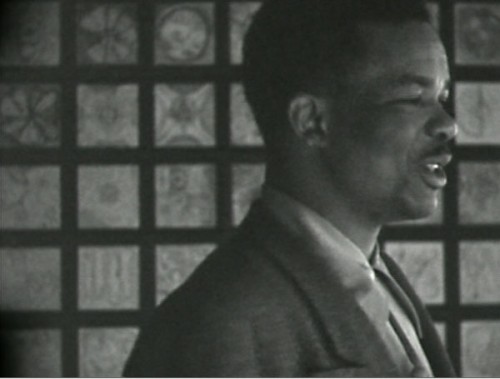
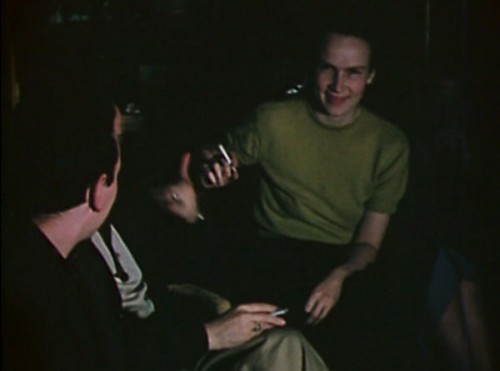



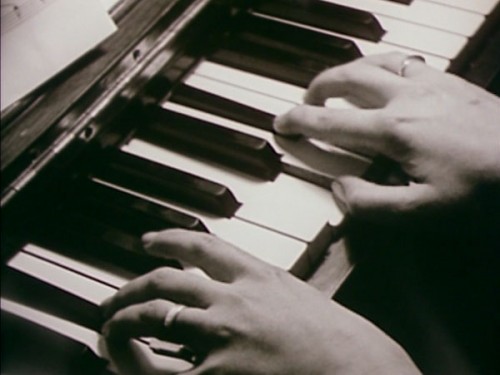

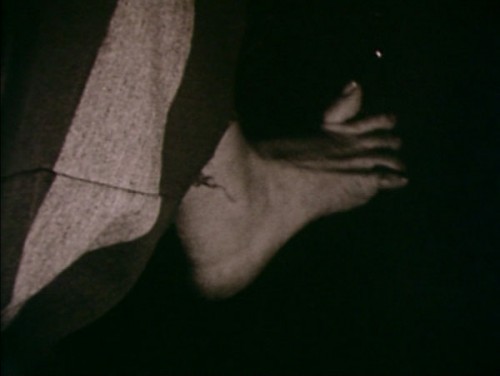

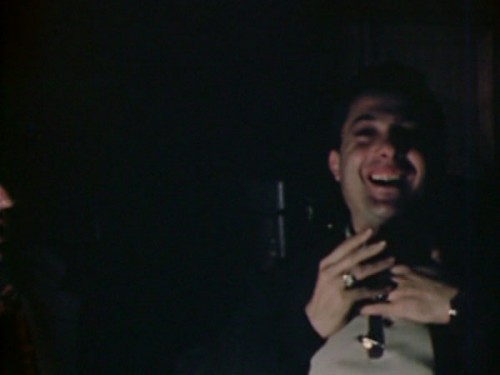








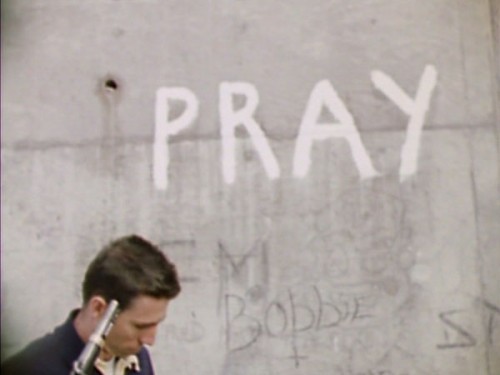


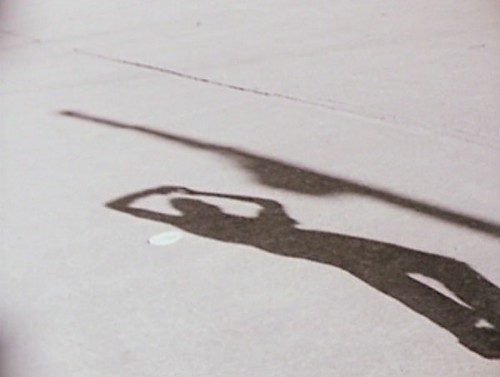




Comments (2)
Thanks, Christian! I must admit, tho, that the proper application of “graffito” is a mean feat for one who grew up reading Herb Caen — “graffito” was one of his favorite words. He may have been no initial friend of the Beats — adding the “nik”, etc. — but he nonetheless had many charms — who in the world of pop journalism writes with that kind of style now?
Another excellent installment.
And bravo! both on finding the remnants of the seminal THE END graffito, and on properly using the singular form of graffiti.
best
Christian